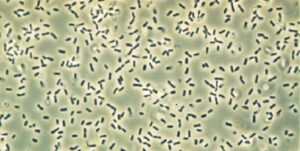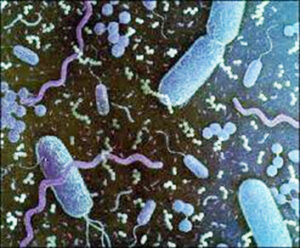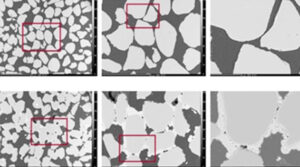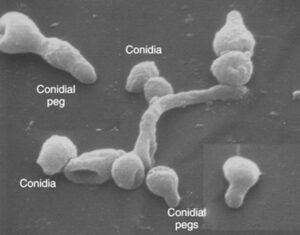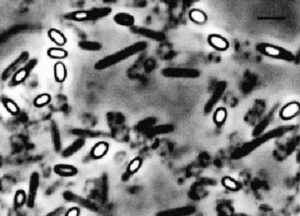(Utilization Of Aerobic And Anaerobic Bacteria In Concrete Technology)
|
Premankur Bhattacharya |
The global achievement in development of technology is commendable. Concrete technology has brought a revolutionary change in modern civilization and a continuous research is being conducted on this subject. Different grades of concrete with different types of plasticizers are very common now. Moreover, we can change the properties of concrete according to the practical requirement at site.
This section of TCT would like to focus on different microbes, which have important role in modification of concrete. The basic reaction in this technology is between lime and microbes. Anaerobic and aerobic bacteria and their catabolism synthesis are not similar. Each bacteria has its own mechanism to take part in reaction with concrete. Bacterial cell count, i.e., colony-forming unit (CFU) has great impact on properties of concrete and self-healing concrete is the simplest example of this.
Looking Back
Ancient architectures are witness of several such monuments. The persistence of the resultant product in the ancient structure is the reaction between lime and different microbes. In fact, we do not know how the microbes were named and chosen at that time. Because no such evidence is documented yet, perhaps at that time, great builders had some other strategy to carry out this reaction between lime, aggregates and microbes. But, the result proves its efficacy in terms of sustainability in different aggressive environment over the period. And we witness this today. In this connection, I can present my one memorable interaction with a mason twenty years back in Kolkata’s Pareshnath Temple. This temple is situated in the north-eastern part of the city of Kolkata. Fortunately, I met one mason whose grandfather was involved at the last phase of this construction of this temple. At that time, I was searching for answer to the question – How the marble statues were fixed on a marble slab, which is built more than 4 feet from ground level?
The entire structure is still lying under open sky. There is no degradation found at the junction between statue and marble slab. That surprised me. We do not have any such polymer adhesive in modern technology that can perform as an effective adhesive to fix up this type of heavy weight marble statue on a marble slab that does not show any degradation under weather action. The mason I met could not explain the chemistry. He took me to his grandfather, who could hardly hear my voice. After a few hours of discussion, the chemistry was exposed.
There was a specific mortar composition for fixing those types of heavy weight statue on marble slab. Sugar and lime were the only ingredients. Stone lime was slaked in a tank. A regular stirring of the lime slurry in tank by bull operated puddler. The top skin from the tank was collected every day before next stirring and collected in a pot. Appropriate quantity of sugar-water solution was added in the lime hydrate collecting pot. After thorough mixing of two components the mix was converted into a special type of adhesive.
The prepared adhesive is that natural adhesive which could fix up successfully the heavy weight statue on a marble slab. There is no degradation of that adhesive over the period. No weather pollution could affect this chemical bond strength. The microbial interaction is the reason behind this permanent bonding property.
Now, let us study the microbe which has functioned in this adhesive chemistry. The metabolic property of Sporosarcina pasteurii precipitates calcium carbonate which, forms as calcite. Its potentiality is already investigated by today’s scientists. This is called microbial mineral precipitation or bio deposition.
It is also now studied that bacterial colony growth at higher alkalinity is practically costly relative to neutral pH. This is due to the higher energy demands of cytoplasmic pH homeostasis. In alkaline condition, Adenosine triphosphate synthesis needs adequate energy. There are three components present in Adenosine triphosphate molecule. The sugar molecule is located at the centre and the same can produce the basis of RNA, which is attached to a base. In this chemistry, the base is adenine. During reaction between lime, sugar and microbe, after certain period, the calcium hydroxide is converted into calcium carbonate with very good bond strength between lime sugar paste and marbles. This bond strength is highly durable and not affected by any type of weather action. This is the simple chemistry of that old adhesive as well as the reason behind the sustainability of the structure.
Adenosine triphosphate molecule stores and releases energy for many cellular processes.
This plays a key role in the above reaction.
A typical image of marble statue fixed on a marble slab.
We will study on:
| 1. Bacillus sphaericus | 2. Sporosarcina pasteurii, |
| 3. Bacillus subtilis, | 4. Bacillus pseudofirmus |
|
5. Bacillus pasteurii, |
5. Bacillus pasteurii, |
|
7. Escherichia coli, |
8. Bacillus cohnii |
|
9. And few other microorganisms, which have specific property on concrete. We will continue to study the behaviours and utilizations of the above microorganisms in concrete technology. |
|
To be continued in part XII…







